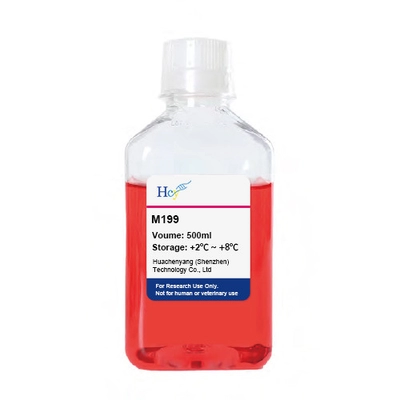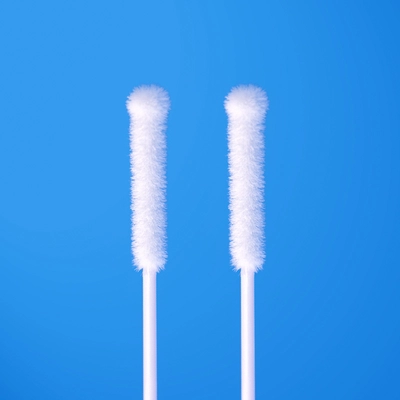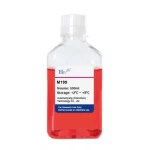Cell Culture Medium
M199 Medium Medium for animal cells Medium 199 Medium for non-transformed cells
product description:
The full name of M199 is Medium 199, that is, medium 199, which was designed by Morgan et al. in 1950. Compared with other basic mediums, M199 contains unique components, including adenine, adenosine, hypoxanthine, thymine, and other vitamins. M199 has two balanced salt compositions, Earle’s salt composition is commonly used in CO2 environments, and Hank’s salt composition is used in non-CO2 environments.
Product Usage:
It was originally used in the nutritional research of chicken embryo fibroblasts and has been widely used in the cultivation of various animal cells, including some non-mammalian animal cells. M199 is especially suitable for the culture of non-transformed cells and is also commonly used in virology, vaccine production, and the culture of rat pancreatic epithelial cells and mouse lens tissue.
For a wide range of cell culture applications, we offer modified M199 media in a variety of components.
| form |
liquid |
| product name |
M199 Cell Culture Medium |
| Specification |
HCY-BCM12001 |
| place of origin |
China |
| brand |
HUACHENYANG |
| color |
light red |
Description of product ingredients:
L-glutamine (Glutamine)
It is an essential nutrient element in cell culture, but it is unstable in the solution and will spontaneously degrade. The medium without L-glutamine can adjust the amount of L-glutamine arbitrarily according to the research needs. Adding fresh L-glutamine or its substitutes is more conducive to the growth of cells.
L-Alanyl-L-glutamine (Alanyl-glutamine, Ala-Glu)
Also known as alanyl-glutamine and proglutamine, it is an advanced cell culture additive that can directly replace L-glutamine in a cell culture medium. L-glutamine (Glutamine) is an essential nutrient in cell culture, but it is unstable in solution and will spontaneously degrade to generate ammonia and pyroglutamic acid, of which ammonia is harmful to cells; and L-alanyl -L-Glutamine is very stable in aqueous solution and will not degrade spontaneously. The mechanism used by cells is: during cell culture, cells will gradually release a peptidase into the culture medium to hydrolyze L-alanyl-L-glutamyl into L-alanine and L-glutamine, Cells then take up these two hydrolysates. The process of cells using L-alanyl-L-glutamyl is similar to the fed-batch culture strategy, continuously adding low-concentration levels of L-glutamine into the culture medium, thereby improving the utilization of L-glutamine rate, and will not generate excess ammonia, which is more conducive to cell growth. L-alanyl-L-glutamyl can replace equimolar L-glutamine, is suitable for all cells, has almost no adaptation, and can prolong the culture time of cells and reduce the number of passages, which saves time and money. Activity decreased more slowly compared to cells cultured in a medium supplemented with L-glutamine. The slightly longer lag period is due to the time required for the release of the peptidase and the digestion of the dipeptide.
Phenol red
is used as an indicator of pH value in the culture medium to continuously monitor the pH of the culture medium. At low pH values, phenol red makes the culture medium yellow, while at higher pH values, it makes the culture medium purple. , when the pH value is 7.2 to 7.4, it is red, which is most suitable for cell culture. However, phenol red also has some disadvantages. Therefore, it is best to use a medium without phenol red when using it. Phenol red interferes with detection during flow cytometry analysis. In addition, the presence of phenol red in some formulations of serum-free media interferes with sodium-potassium balance.





 icleanswabs
icleanswabs





